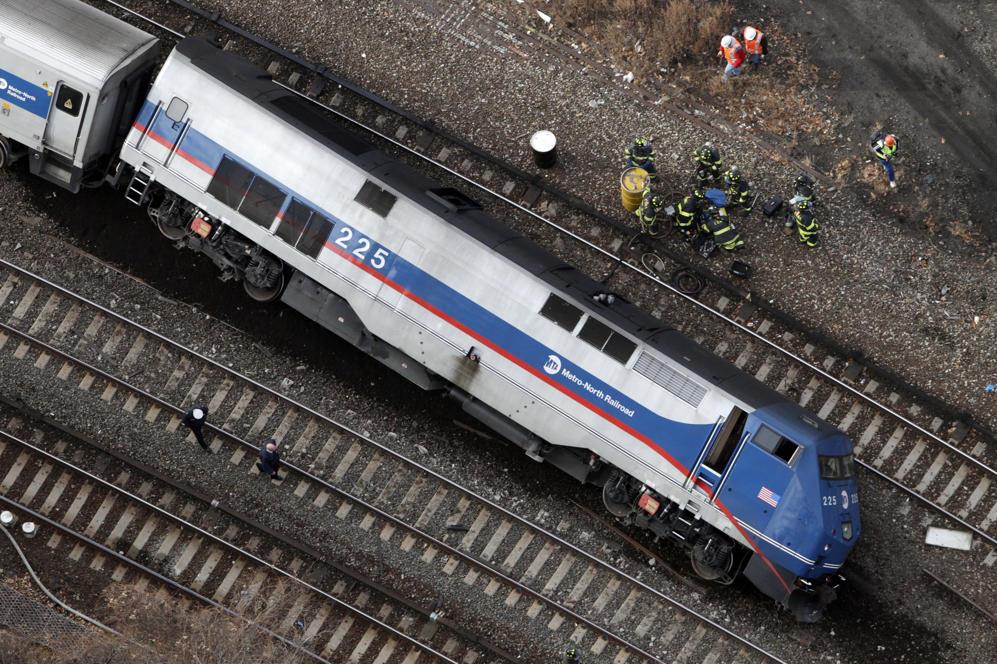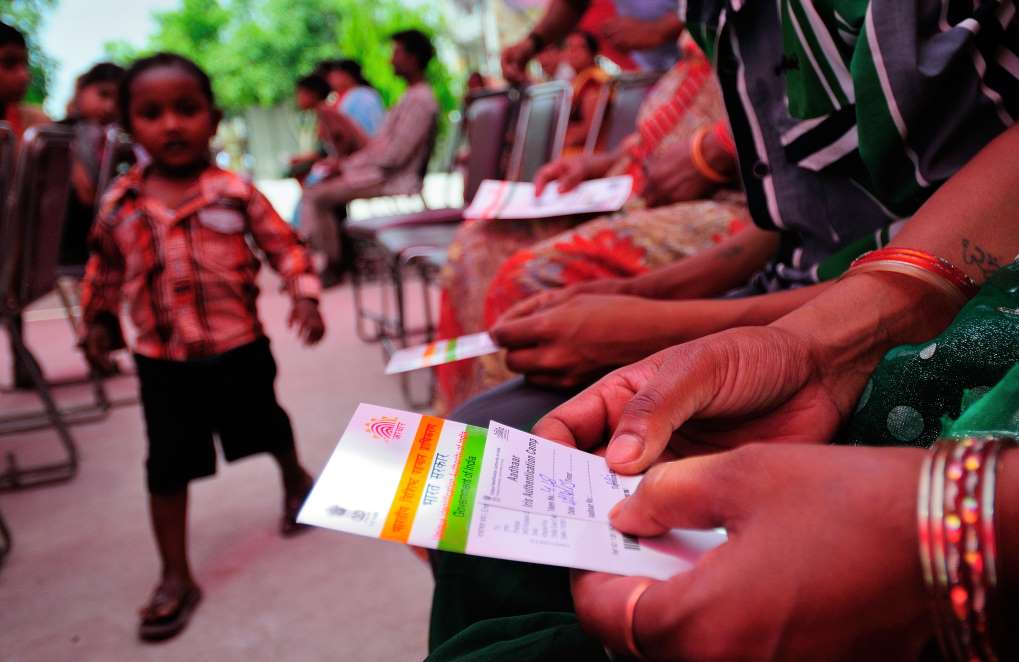December 1, 2013
NEW YORK: A New York City commuter train rounding a riverside curve derailed and came to rest only inches from the water on Sunday, killing four people, injuring more than 60 and sending a chain of toppled cars shaped like a backward question mark trailing off the track, authorities said.

December 1, 2013
NEW YORK: A New York City commuter train rounding a riverside curve derailed and came to rest only inches from the water on Sunday, killing four people, injuring more than 60 and sending a chain of toppled cars shaped like a backward question mark trailing off the track, authorities said.

Four passengers were killed as a New York City commuter train rounding a riverside curve derailed.
Some of the 100 to 150 passengers on the early morning Metro-North train from suburban Poughkeepsie to Manhattan were jolted awake around 7.20am to screams and the frightening sensation of their compartment rolling over on a bend where the Hudson and Harlem rivers meet in the Bronx. When the motion stopped, four or five of the seven cars were off the rails in the latest, and deadliest, example of this year's troubles for the second-biggest US commuter railroad.
"Four people lost their lives today in the holiday season, right after Thanksgiving,'' New York Gov. Andrew Cuomo said at a news conference. Eleven of those hurt were believed to be critically injured and another six seriously hurt, according to the fire department.
The train operator was among the injured, Cuomo said.
The National Transportation Safety Board was en route to investigate, and Cuomo would not speculate about the causes of the crash until the federal agency issued its findings. Metropolitan Transportation Authority chairman Thomas F Prendergast said investigators would look at factors including the train, the track and signal system, the train operators and speed.
The big curve where the derailment occurred is in a slow-speed area. Several injured passengers told The Associated Press that the train seemed to be going too fast as it took the curve near the Spuyten Duyvil station.
MTA spokeswoman Marjorie Anders said the train's data recorders should be able to tell how fast it was travelling.
Many of those aboard the train were probably headed to New York for holiday shopping.
Joel Zaritsky was dozing as he traveled to the city for a dental convention.
"I woke up when the car started rolling several times. Then I saw the gravel coming at me, and I heard people screaming,'' he told The Associated Press, holding his bloody right hand. "There was smoke everywhere and debris. People were thrown to the other side of the train.''
Mike Gallo heard the crash as he was walking his dog. He looked down at the tracks and "knew it was a tragedy right away. I saw injured people climbing out of the train.''
Within minutes, dozens of emergency crews arrived and carried passengers away on stretchers, some wearing neck braces.
"This curve's been here a long, long time,'' Gallo said, adding that the spot has a reputation for being treacherous, especially if a train is speeding.
Three of the dead were found outside the train, and one was found inside, authorities said. Their families had not yet been notified.
Passengers were taken off the derailed train, with dozens of them bloodied and scratched, holding ice packs to their heads. The fire department said 130 firefighters responded to the scene.
Edwin Valero was in an apartment building above the accident. At first, he said, he didn't notice that the train had flipped over.
"I didn't realize it had been turned over until I saw a firefighter walking on the window,'' he said.
Amtrak Empire service was halted between New York City and Albany after the derailment. Amtrak said its Northeast Corridor service between Boston and Washington was unaffected.
When the NTSB gives the go-ahead, the MTA will begin efforts to restore service, Prendergast said.
President Barack Obama said his thoughts and prayers are with the friends and families of the victims of the train derailment. The White House issued a statement saying the president was briefed on the accident Sunday morning and would continue to stay in touch with New York officials throughout the day.
Sunday's accident is the second passenger train derailment in six months for the rail service.
On May 17, an eastbound train derailed in Bridgeport, Connecticut, and was struck by a westbound train. The crash injured 73 passengers, two engineers and a conductor. Eleven days later, track foreman Robert Luden was struck and killed by a train in West Haven, Connecticut.
In July, a freight train full of garbage derailed while using a Metro-North line, and this fall service on Metro-North's line between New York City and Connecticut was hobbled for days after a high-voltage feeder line failed.
Earlier this month, Metro-North's chief engineer, Robert Puciloski, told members of the NTSB investigating the May derailment and Luden's death that the railroad is "behind in several areas,'' including a five-year schedule of cyclical maintenance that had not been conducted in the area of the Bridgeport derailment since 2005.
The NTSB issued an urgent recommendation to Metro-North that it use "redundant protection,'' such as a procedure known as "shunting'' in which crews attach a device to the rail in a work zone alerting the dispatcher to inform approaching trains to stop.
Courtesy: AP
















































































































